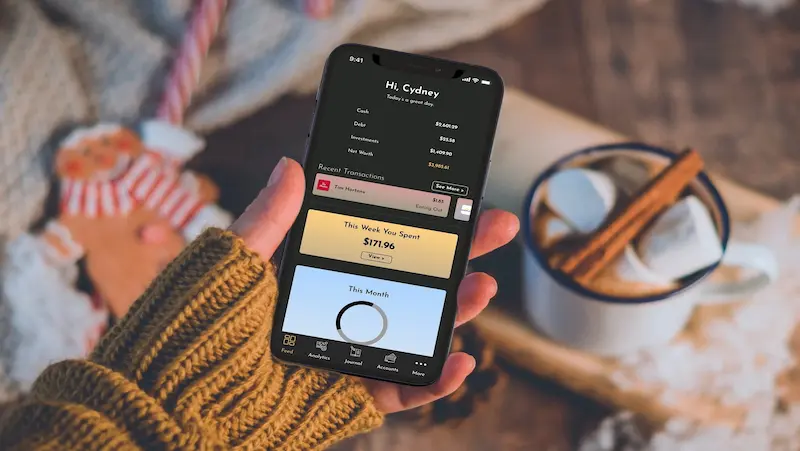In a world filled with choices, teaching kids about budgeting activities for kids is a crucial life lesson that sets the foundation for a secure financial future. Understanding the value of money and how to manage it wisely empowers children to make informed decisions, fostering financial responsibility from an early age. In this introduction, we delve into the significance of imparting budgeting skills to kids, a key step in equipping them with the tools they need for a successful and financially savvy adulthood.
Table of contents
Age-Appropriate Budgeting Activities

Preschoolers (Ages 3-5)
Preschoolers are like sponges, absorbing information through play. Introduce the concept of money through simple games. Create a Play Store where they can “buy” items using play money. Use this opportunity to teach them the value of coins and bills. You can also incorporate counting into the game, enhancing their numerical skills.
Elementary School Kids (Ages 6-10)
For elementary school kids, make budgeting a fun family affair. Provide a small allowance and encourage them to save for something special. Create a simple visual chart where they can track their spending and savings. Engage them in discussions about needs versus wants, helping them differentiate between essential and non-essential purchases.
Middle Schoolers (Ages 11-14)
Middle schoolers are ready for more responsibility. Introduce the idea of budgeting categories, such as saving for future goals, spending on personal items, and giving to others. Encourage them to keep a personal spending journal, recording their income and expenses. This practice fosters accountability and a deeper understanding of financial choices.
Teens (Ages 15-18)
As teenagers approach adulthood, it’s crucial to prepare them for financial independence. Help them set up a simple budget that includes income, fixed expenses (like phone bills), and variable expenses (like entertainment). Introduce the concept of long-term goals, such as saving for a car or college. Encourage them to explore part-time jobs to earn extra income and reinforce the importance of saving for emergencies.
Introduction to Money

Identifying Coins and Bills
Let’s start with the tangible forms of money—coins and bills. Coins typically come in various shapes, sizes, and metals. Common coins include the penny, nickel, dime, and quarter. Each coin bears distinctive features, such as portraits of historical figures or national symbols.
On the other hand, bills, or paper currency, are distinguished by their denominations and the faces of significant figures like presidents or national leaders. Common denominations include $1, $5, $10, $20, and so on.
Practice recognizing these coins and bills in your daily life. Take a moment to observe their unique characteristics, and soon you’ll be able to identify them effortlessly.
Understanding the Value of Money
Understanding the value of money is crucial for making informed decisions. Each coin and bill has a specific value assigned to it. For instance, a quarter is worth 25 cents, while a $5 bill is equivalent to five one-dollar bills.
To reinforce this concept, engage in practical activities with real-life scenarios. Play simple games that involve buying and selling items using different denominations. This hands-on approach will not only help in recognizing coins and bills but also in comprehending their relative values.
Allowance and Budgeting

Weekly Allowance for Kids
Giving your kids a weekly allowance is a great way to teach them about money management from an early age. It instills a sense of responsibility and helps them understand the value of budgeting. Keep it simple by deciding on a reasonable amount based on their age and your family’s financial situation.
For younger children, a small amount that they can use for treats or small toys is sufficient. Older kids may receive a larger allowance to cover additional expenses like snacks at school or entertainment with friends. The key is to strike a balance that allows them to learn without overwhelming them.
Creating a Kid-Friendly Budget
Helping your kids create a simple budget is an essential step in teaching financial responsibility. Break down their allowance into categories like saving, spending, and sharing. Keep it visual by using simple charts or graphics that they can understand.
1. Saving: Encourage your kids to set aside a portion of their allowance for saving. This could be for a specific goal, like buying a new toy or gadget. It introduces the concept of delayed gratification and the importance of the best saving account for kids for the future.
2. Spending: Allocate a portion of the allowance for spending on immediate wants or needs. This helps them understand the value of money in day-to-day life and make choices about how to use their funds wisely.
3. Sharing: Cultivate a sense of generosity by encouraging your kids to allocate a small part of their allowance for charitable contributions or sharing with friends. This teaches them about the joy of giving back to the community.
Money Jars and Envelopes

Allocating Money for Different Expenses
Imagine your income as pieces of a puzzle, and each puzzle piece represents a specific expense. Money jars and envelopes help you assign a designated space for each puzzle piece. For instance:
1. Bills Jar/Envelope: Allocate a portion of your income to cover your regular bills such as rent, utilities, and subscriptions. This ensures that these essential expenses are always covered.
2. Groceries Jar/Envelope: Set aside money for groceries to avoid overspending at the supermarket. Having a dedicated fund for food expenses keeps your budget in check.
3. Entertainment Jar/Envelope: Plan for leisure activities and entertainment by allocating a specific amount for movies, dining out, or other recreational activities for kids.
4. Emergency Fund Jar/Envelope: Build a safety net by saving a small percentage of your income for unexpected expenses. This ensures you’re prepared for life’s surprises without disrupting your budget.
Tracking Savings and Spending
The beauty of money jars and envelopes lies in their transparency. By physically separating your money into different categories, you can easily track your savings and spending. Here’s how:
1. Regular Check-ins: Periodically review the contents of each jar or envelope. This quick check allows you to see how much you’ve saved and how much you’ve spent in specific categories.
2. Adjustments: If you notice that one category consistently runs out too quickly, you can make adjustments. Perhaps you need to allocate more money to groceries or reduce spending in the entertainment category.
3. Visual Reinforcement: Physically seeing the money in each jar or envelope provides a visual reminder of your financial goals. It helps you make conscious choices about your spending, reinforcing positive financial habits.
Earning through Chores

Responsibilities and Earnings
Assigning age-appropriate chores for kids to children not only teaches them practical life skills but also introduces the concept of earning through their efforts. Whether it’s making the bed, taking out the trash, or helping with household cleaning, each task comes with its own set of responsibilities and, in turn, a small reward.
Consider creating a chore chart that clearly outlines the tasks assigned to each family member along with the corresponding earnings. This not only provides a visual guide but also adds an element of excitement as children can see their progress and the fruits of their labor.
By tying earnings to responsibilities, children learn the correlation between effort and reward. This simple structure sets the foundation for a strong work ethic and financial understanding.
Work Ethics and Responsibility
Earning through chores goes beyond just pocket money; it instills a sense of work ethic and responsibility from an early age. As children accomplish their assigned tasks, they develop a sense of pride and ownership. This sense of achievement becomes a driving force, encouraging them to approach other aspects of life with the same dedication.
Furthermore, this system teaches the importance of accountability. If a chore is neglected, the associated earnings are affected. This consequence-based learning helps children understand the real-world implications of their actions and the importance of fulfilling commitments.
Savings Challenges

Fun Savings Challenges for Kids
Teaching kids the value of saving money doesn’t have to be a chore; in fact, it can be a lot of fun! Here are some exciting savings challenges to make the learning process enjoyable for your little ones:
1. The Jar Challenge:
Set up savings jars for different goals, like toys, treats, or a special outing. Encourage kids to drop spare change or a small portion of their allowance into the jars regularly. Watching the jars fill up is not only rewarding but also teaches them patience.
2. The Match Game:
Offer to match a percentage of what they save. This not only motivates them to save more but also introduces the concept of interest and the idea that their money can grow.
3. The Wish List Challenge:
Have your kids create a wish list of things they want. Assign each item a savings goal and help them calculate how much they need to save each week or month to reach it. This not only teaches budgeting but also goal-setting.
Rewarding Good Saving Habits
Incorporating rewards into your child’s savings routine can make the process even more engaging. Consider these simple yet effective ways to acknowledge and reinforce good saving habits:
1. Sticker Chart:
Create a sticker chart where each saved amount earns them a sticker. Once they reach a certain number of stickers, reward them with a small treat or privilege. This visual representation makes saving tangible and enjoyable.
2. Recognition Day:
Designate a “Recognition Day” each month where you acknowledge their efforts in saving. This could involve a little ceremony at home, celebrating their accomplishments and reinforcing the importance of saving.
3. Special Privileges:
Linking good saving habits to special privileges, like choosing a movie for family night or getting to pick a weekend activity, creates a positive association with saving.
Budgeting Apps and Tools

Kid-Friendly Budgeting Apps
Introducing financial literacy to children early on sets a solid foundation for a lifetime of smart money management. Kid-friendly budgeting apps make this learning process engaging and fun. Apps like “PiggyBot” and “iAllowance” allow children to set savings goals, track their allowances, and learn basic budgeting skills in a playful, interactive environment. With colorful interfaces and simple navigation, these apps make financial education an enjoyable experience for the little ones.
Using Digital Tools for Money Management
For adults navigating the complex world of personal finance, digital tools come to the rescue. Applications like “Mint” and “PocketGuard” link seamlessly with your bank accounts for kids, providing a real-time overview of your spending, savings, and investment patterns. These tools categorize transactions, create budgets, and offer insightful financial reports—all at the touch of your fingertips. With user-friendly interfaces, they empower users to take control of their finances without the complexity of traditional budgeting methods.
Financial Games

Board Games for Money Management:
Board games have been a timeless source of entertainment, but did you know they can also be powerful tools for teaching money management? Games like Monopoly, Cashflow, and The Game of Life provide a playful environment to learn about income, expenses, investments, and the importance of making strategic financial decisions.
Monopoly, for example, teaches players about property management, negotiation skills, and the consequences of financial choices. Cashflow, designed by renowned entrepreneur Robert Kiyosaki, simulates real-life financial strategies and investment opportunities. These games not only make learning about money fun but also instill valuable lessons in a simple, accessible manner.
Online Financial Simulations for Kids:
In the digital age, online simulations offer a dynamic and interactive approach to financial education. Tailored specifically for kids, these simulations create virtual environments where young learners can experiment with financial concepts in a risk-free setting.
Platforms like PwC’s “Financial Soccer” and “Money Metropolis” by Practical Money Skills for Life engage kids through gamified interfaces. In Financial Soccer, players answer financial questions to advance down the field, combining sports excitement with financial education. Money Metropolis, on the other hand, immerses children in a virtual city where they make decisions about earning, spending, saving, and investing.
Parental Involvement

Guiding Kids in Budgeting Activities
Teaching kids the basics of budgeting is an invaluable life skill that lays the foundation for responsible financial good habits for kids. Parents can start with simple exercises, such as creating a weekly or monthly allowance and helping children allocate funds for various purposes. This could include saving for future goals, spending on immediate needs, and perhaps even setting aside a portion for charity or community projects.
Through these budgeting activities, children learn the importance of prioritizing, planning, and making informed choices with their money. This hands-on approach not only instills financial responsibility but also fosters a sense of empowerment as children see the direct impact of their decisions.
Encouraging Open Financial Conversations
Communication is key in any aspect of parenting, and finance is no exception. Parents can create a supportive environment by encouraging open and honest conversations about money. Starting with age-appropriate discussions about where money comes from and why it’s important can set the stage for more complex financial topics later on.
As children grow older, parents can share insights about their own financial experiences, emphasizing both successes and challenges. This transparency helps demystify the often-taboo subject of money and allows children to learn from real-world examples. Moreover, it nurtures a healthy attitude towards financial matters, promoting the understanding that mistakes are part of the learning process.
Preparing for the Future

Building Lifelong Budgeting Skills
Budgeting is the foundation of financial success. It’s about managing your money wisely to achieve both short-term and long-term goals. To build lifelong budgeting skills, start with these simple steps:
1. Track Your Expenses: Keep a record of your spending to understand where your money goes. This simple habit can reveal opportunities for savings.
2. Create a Realistic Budget: Based on your income and expenses, create a budget that covers essential needs first and allocates money for savings and discretionary spending.
3. Emergency Fund: Save a small portion of your income for unexpected expenses. Having an emergency fund provides financial security and reduces stress during unforeseen circumstances.
4. Prioritize Saving: Whether it’s for a specific goal or retirement, make saving a priority. Even small amounts can add up over time.
Transitioning to Adult Financial Responsibility
Transitioning to adult financial responsibility involves more than just paying bills. It’s about managing your financial affairs independently and planning for your future. Keep it simple with these steps:
1. Understand Your Finances: Be aware of your income, expenses, and financial goals. Regularly review your financial situation to make informed decisions.
2. Establish Credit Responsibly: Building good credit is crucial for future financial opportunities. Use credit wisely, pay bills on time, and keep your credit utilization low.
3. Plan for Retirement: It’s never too early to start saving for retirement. Contribute to employer-sponsored retirement plans or open an individual retirement account (IRA).
4. Insurance Matters: Explore insurance options to protect yourself financially in case of unexpected events. This includes health insurance, renter’s insurance, and life insurance.
Conclusion
In conclusion, engaging children in budgeting activities is a powerful tool for empowerment. By instilling financial literacy early on, we equip kids with essential life skills, fostering responsibility and a sense of control over their financial future. Through practical budgeting experiences, we pave the way for a generation that understands the value of money and the importance of making informed financial decisions.
To get your hands on more educational and free resources on coding for kids, robotics for kids, financial education for kids, etc., do check out the BrightCHAMPS Page now!
To get your hands on more such articles, educational content, and free resources on coding for kids, robotics courses, game development, etc., check out the BrightCHAMPS Blog Page now!
Frequently Asked Questions
A1. Introduce basic concepts with activities like counting coins, sorting money, and playing shopkeeper with pretend money.
A2. Set up a piggy bank and encourage saving by having them allocate a portion of their allowance or gift money to it regularly.
A3. Yes, apps like “PiggyBot” and “iAllowance” make learning about money enjoyable for kids with games and virtual savings features.
A4. Parents should lead by example, involve kids in family budget discussions, and provide opportunities for hands-on money management experiences.
A5. Try challenges like the “Jar Challenge” (saving specific amounts weekly) or the “Goal Chart” (visualizing savings goals) to make learning about money engaging for kids.


 We are an army of educators and passionate learners from BrightChamps family, committed to providing free learning resources to kids, parents & students.
We are an army of educators and passionate learners from BrightChamps family, committed to providing free learning resources to kids, parents & students.












